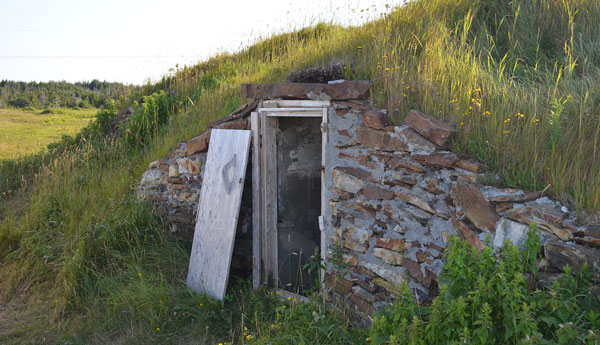 As the late-receding winter chill turns to summer heat, many folks will be looking for a way to preserve the fruits and vegetables that will soon sprout their way into existence. The issue for many homesteaders, however, is finding enough refrigerator space for all their crops. Named for the root-type vegetables traditionally preserved there, a root cellar is a naturally insulated room which can keep your preserves from freezing in the winter, and spoiling in the summer. Read on for some facts about different types of root cellars, as well as some basic tips for building your own.
As the late-receding winter chill turns to summer heat, many folks will be looking for a way to preserve the fruits and vegetables that will soon sprout their way into existence. The issue for many homesteaders, however, is finding enough refrigerator space for all their crops. Named for the root-type vegetables traditionally preserved there, a root cellar is a naturally insulated room which can keep your preserves from freezing in the winter, and spoiling in the summer. Read on for some facts about different types of root cellars, as well as some basic tips for building your own.
Fundamentals
Let’s get the base parameters out of the way. For your root cellar to function, it needs to hold the same temperature as a common refrigerator–about 32-40-degrees Fahrenheit–with a high humidity level. The latter has a little more wiggle room, but generally between 85 and 95 percent is advisable. Much like a refrigerator, the low temperatures slow the release of gasses from the plants, and the growth of decomposition-causing microorganisms. The high humidity, meanwhile, prevents your produce from losing too much moisture. All that said, keep in mind a root cellar is nothing more than a natural, energy-efficient refrigerator–don’t expect miracles of it. As its name implies, the root cellar is best for storing root vegetables, such as potatoes, beets, carrots, turnips and radishes. Fruits and leaf vegetables–like strawberries and lettuce–stored in your root cellar will last about as long as they would in a common refrigerator. Such produce should be canned or pickled for long-term storage.
How the Magic Happens
That’s all well and good, you’re probably thinking, but how exactly does the cellar work its magic? Well, as it turns out, the earth is an excellent insulator. A root cellar, usually buried below ground (hence the second half of the name) uses this property to keep its inventory warmed in the winter, and cool in the summer. For best effects, the cellar should be buried at least 10 feet below ground, where the earth’s natural temperature is less affected by the changing conditions on the surface.
Tips for Storing Food in Your Root Cellar
Many of these tips may seem a tad bit self explanatory, but they’re important to follow nonetheless.
- Don’t store your produce dirty. Dirt retains moisture in a bad way, and can quicken rot.
- Put the produce that spoils most easily near the floor. Heat and humidity rise, while cold air sinks. This will help preserve it for longer.
- Wrap your non-canned fruit in paper. Fruit releases gas quicker than most vegetables (one of the reasons it generally does not last as long). The paper slows this release.
- Related to the previous, once fruit begins to spoil, throw it out. The old adage “a rotten apple spoils the bushel” comes from this, as spoiled fruit will cause surrounding produce to spoil. This is also true for vegetables.
- Leave as much of a gap between pieces of produce as possible (including underneath it, using a porous material), to increase ventilation.
That covers the why and how of a root cellar. Curious how to make your own? Tune in next week, for a discussion on some basic types of root cellars, and how to create them.
A humble homesteader based in an undisclosed location, Lars Drecker splits his time between tending his little slice of self-sustaining heaven, and bothering his neighbors to do his work for him. This is mainly the fault of a debilitating predilection for fishing, hunting, camping and all other things outdoors. When not engaged in any of the above activities, you can normally find him broken down on the side of the road, in some piece of junk he just “fixed-up.”

Steven M. says
I have long dreamed of owning my own root cellar, if only to have a cool place to escape the summer heat. I am looking forward to reading the rest of this series.
VaWhiteTailHunter76 says
The average ground temperature, 10-ft down, is only 50 deg F. You cannot attain the temperatures the author stated of 32-40 deg F
Pam Patete says
Thanks for the info. I immediately had doubts about the stated temperature.
I still hold hope for the husband to build one.
Bill Gray says
Would like to get more articles like this